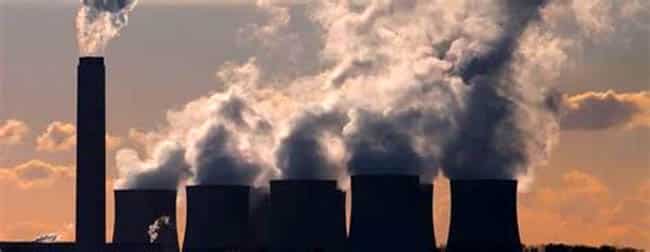
Global carbon emissions from fossil fuels will reach a record high in 2024, according to new research.
The 2024 Global Carbon Budget projects fossil carbon dioxide (CO2) emissions of 37.4 billion tonnes, up 0.8% from 2023. A preprint of the 19th annual annual report, produced by an international team of more than 120 scientists, provides was published in the journal Earth System Science Data on November 13.
Despite the urgent need to cut emissions to slow climate change, the researchers say there is still “no sign” that the world has reached a peak in fossil CO2 emissions.
With projected emissions from land-use change (such as deforestation) of 4.2 billion tonnes, total CO2 emissions are projected to be 41.6 billion tonnes in 2024, up from 40.6 billion tonnes last year.
Over the last 10 years, fossil CO2 emissions have risen while land-use change CO2 emissions have declined on average – leaving overall emissions roughly level over that period. This year, both fossil and land-use change CO2 emissions are set to rise, with drought conditions exacerbating emissions from deforestation and forest degradation fires during the El Niño climate event of 2023-2024.
With over 40 billion tonnes released each year at present, the level of CO2 in the atmosphere continues to rise – driving increasingly dangerous global warming.
“The impacts of climate change are becoming increasingly dramatic, yet we still see no sign that burning of fossil fuels has peaked,” said lead author Pierre Friedlingstein, of the University of Exeter.
“Time is running out to meet the Paris Agreement goals – and world leaders meeting at COP29 must bring about rapid and deep cuts to fossil fuel emissions to give us a chance of staying well below 2°C warming above pre-industrial levels. Until we reach net zero CO2 emissions globally, world temperatures will continue to rise and cause increasingly severe impacts.”
Other key findings from the 2024 Global Carbon Budget include:
- Globally, emissions from different fossil fuels in 2024 are projected to increase: coal (0.2%), oil (0.9%), gas (2.4%). These contribute 41%, 32% and 21% of global fossil CO2 emissions respectively. Given the uncertainty in the projections, it remains possible that coal emissions could decline in 2024.
- China’s emissions (32% of the global total) are projected to marginally increase by 0.2%, although the projected range includes a possible decrease in emissions.
- US emissions (13% of the global total) are projected to decrease by 0.6%.
- India’s emissions (8% of the global total) are projected to increase by 4.6%.
- European Union emissions (7% of the global total) are projected to decrease by 3.8%.
- Emissions in the rest of the world (38% of the global total) are projected to increase by 1.1%.
- International aviation and shipping (3% of the global total, and counted separately from national/regional totals) are projected to increase by 7.8% in 2024, but remain below their 2019 pre-pandemic level by 3.5%.
- Globally, emissions from land-use change (such as deforestation) have decreased by 20% in the past decade, but are set to rise in 2024.
- Permanent CO2 removal through reforestation and afforestation (new forests) is offsetting about half of the permanent deforestation emissions.
- Current levels of technology-based Carbon Dioxide Removal (excluding nature-based means such as reforestation) only account for about one-millionth of the CO2 emitted from fossil fuels.
- Atmospheric CO2 levels are set to reach 422.5 parts per million in 2024, 2.8 parts per million above 2023, and 52% above pre-industrial levels.
- The effects of the temporary El Niño climate event also led to a reduction in carbon absorption by ecosystems on land (known as the land CO2 “sink”) in 2023, which is projected to recover as El Niño ended by the second quarter of 2024.
- Emissions from fires in 2024 have been above the average since the beginning of the satellite record in 2003, particularly due to the extreme 2023 wildfire season in Canada (which persisted in 2024) and intense drought in Brazil.
- The land and ocean CO2 sinks combined continued to take up around half of the total CO2 emissions, despite being negatively impacted by climate change.
At the current rate of emissions, there is a a 50% chance that global warming will consistently exceed 1.5°C in about six years. This estimate is subject to large uncertainties, but it is clear that the time left to meet the 1.5°C target and avoid the worst impacts of climate change has almost run out.
(Adapted from materials provided by the University of Exeter.)


